“A herring should swim three times — in the sea, in spirit vinegar, and in schnapps.” Well, that’s at least if Skånska Sillaacademien gets their say on the matter. The appreciation society started in 1982 and consists of a group of enthusiasts who adore this particular type of fish — especially when it’s pickled herring, or inlagd sill, as the Swedes say. But trust me, alcohol is not necessary to savor this delicacy. (Just don’t tell them I said that.)
Here’s a very quick way to make delicious pickled herring, in stop motion:
Click here to skip straight to the pickled herring recipe.
A short(-ish) history of Swedish herring
The Swedes have eaten herring for a long time. According to food historian Jan-Öjvind Swahn, herring has historically been one of the most essential basic foods — and not just in Sweden. In medieval times, this was important for the trade in large parts of Europe.
Sweden had three golden periods of herring fishing. First, in late medieval times until the 16th century, when the herring trade centers in Skanör and Falsterbo in Scania — Skåne — in the south of Sweden were one of the most important food industries in Europe. The second period was 1747-1809 in the county of Bohuslän on Sweden’s west coast, not far from Gothenburg. The final period was 1877-1899.

In his History of the Nordic People, published in Latin in Rome in 1555, the archbishop, cartographer and author Olaus Magnus claims that the fish was so plentiful that you could catch it with a tuck and the net would break under the strain. Fair enough, but there’s more — a halberd would stand without falling if you drove it into a school of fish! Regardless of the truth of that story, it surely falls into the “don’t try this at home”-territory…
Olaus Magnus claims that along the Scanian coasts, people caught and salted so much herring that it was enough to satisfy a large part of Europe’s need for fish. The Swedish king didn’t mind, as there were plenty of taxes and customs that made sure that the Swedish state benefited, too.
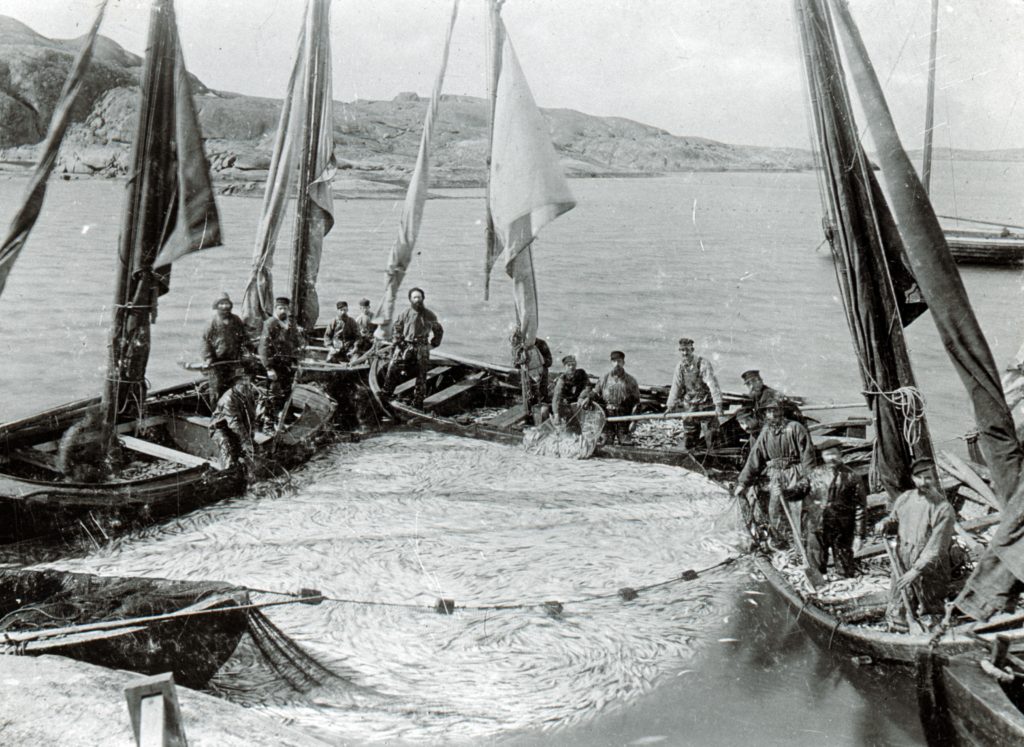
The Swedish herring trade
While Olaus Magnus in the mid-16th century talks a lot of the fish trade in the south of Sweden, the west coast became just as important. Marstrand, not far from Gothenburg, became a trade center, as that was the place where foreigners were allowed to fish, salt, and sell fish. The locals could fish wherever they wanted. You can bet there were strict rules, and special inspectors ensured that everyone followed them.
If you looked at the trade close to the origin of the supply chain, it seems to have been a bit wet, to say the least — Rolf Eriksson shares how the person who offered the highest bid for the fish would confirm the bid by throwing a barrel of schnapps into the nets. If there were any fish left, the next bidder would repeat the process, and so on. The fishermen would probably get pretty round under their feet, as the Swedes say — drunk.
You can imagine how important the herring trade was if you take a look at old newspapers and read the market reports. In Svenska Dagbladet, you could read details about the herring draft, its size, quality, and price. For example, in 1885, the supply consisted of “big, particularly beautiful herring”.
The Swedish herring trade blossomed. But, as the herring was plentiful and the fishing methods got better and better, a new “issue” arose… too much herring?
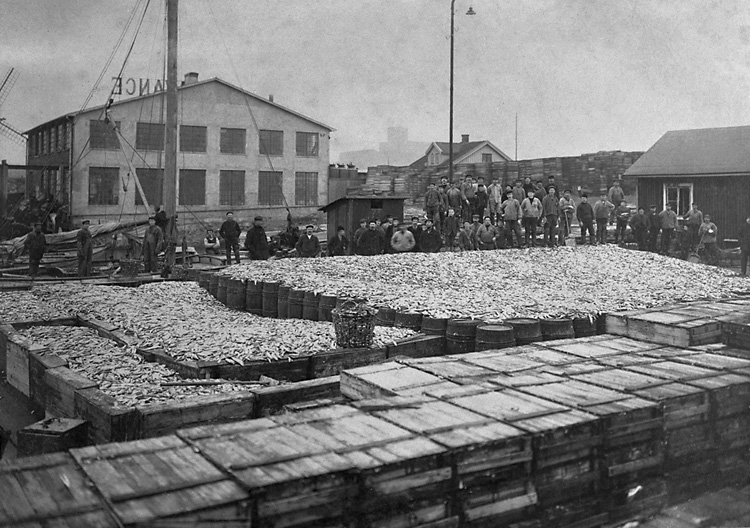
Paris, city of lights… all because of herring?
According to Rolf Eriksson’s 500 år av sillfeske, the herring draft was sometimes so abundant in the 1760s that the fishermen run out of barrels and salt. The solution? Extracting fish oil. Apparently, the oil was burnt to keep the lights on in Paris as well as in front of catholic Europe’s sacred images — it was cheaper than candles… In Germany, the oil was boiled into soap.
Refining twenty barrels of herring into one barrel of fish oil caused a lot of spillages, and the leftover fish was unceremoniously dumped nearby the refineries. Can you imagine the stench? The people living nearby weren’t happy. To make it worse, the fish remains changed the waters and the herring stopped coming. The waste from the fish oil refineries has been referred to as Sweden’s first environmental problem — I can’t judge for that, but it seems to have been most unpleasant for all parties. Well, apart from the fish oil refinery owners, who became very rich…
As the complaints escalated, the king felt obliged to get involved. The refinery owners responded by having a report called Trangrums-acten published in 1784. Unsurprisingly, this not-so-objective piece of lobbying showed that there was no damage to “neither harbors nor waterways or fishery” from the fish oil waste. That was that. However, as the herring changed its ways and stopped coming, the profitability of the refineries plummeted, and the fish oil trade died out.
So, no — Paris is no longer alight thanks to poor fish.
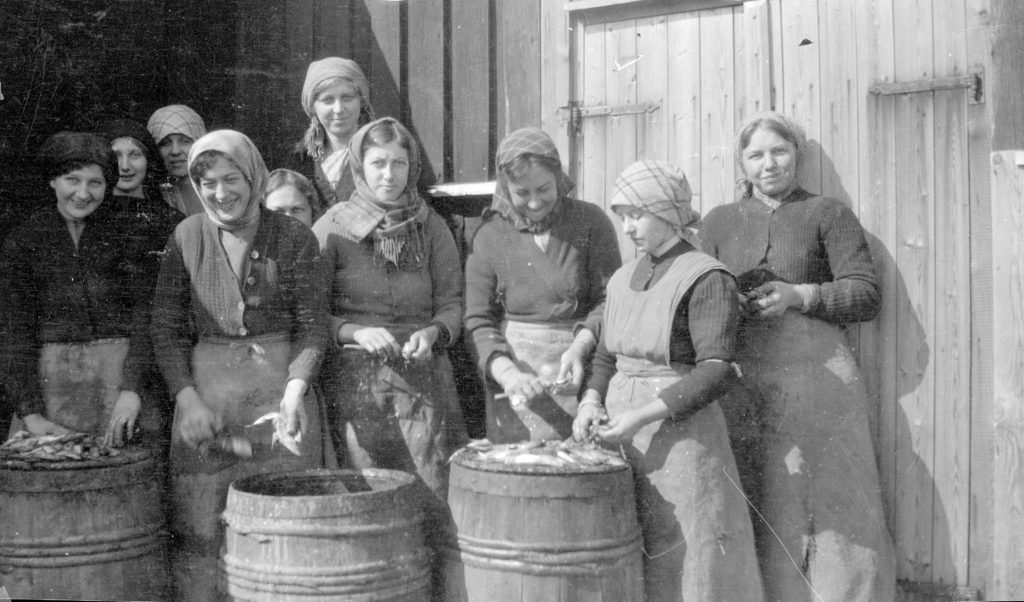
Myths of the fire-loving herring
Maybe it is unsurprising that such an important food would gather its fair share of myths. Olaus Magnus claims that the herring may subsist only on water, lives in the “depths of the sea” in the winter, and sometimes give off a bolt of lightning when moving together, known as sillblixt. This mysterious herring even comes to the shore to observe the large fires outside the tradesmen’s tents.
It sounds rather romantic — a school of big-eyed fish gazing longingly on bonfires. But apparently, Olaus Magnus was somewhat right in that regard. Rolf Eriksson’s 500 år av sillfeske shares how it in Bohuslän was forbidden to row out to the nets at night and use lanterns to attract the fish. If you were caught, you would lose both your catch and your nets. Only once it was 10 o’clock in the morning were the fishermen allowed to inspect their draft.
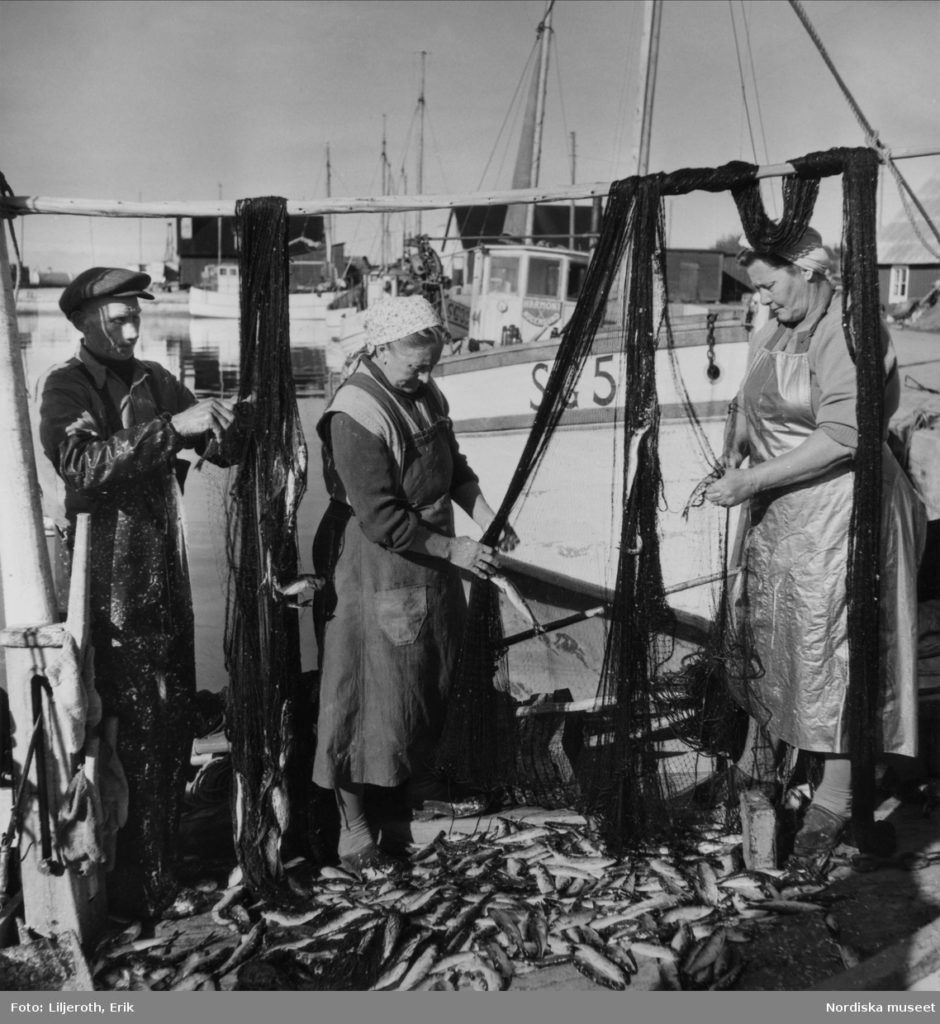
Sill vs strömming
If you read any Swedish cookbooks, you’ll see recipes calling for sill (herring) and recipes calling for strömming (Baltic herring). So, what’s the difference?
At the south-east corner of Sweden, the fish you catch abruptly changes name. If you fish it outside Kalmar, it’s strömming. Outside Karlskrona, it’s sill. While the herring can become 40 centimeters, or almost 16 inches long, the Baltic herring is only half the size.
So, to simplify. On the west coast, it’s herring. On the east coast, it’s Baltic herring.
How do the Swedes eat herring?
“Darling, can’t you hear me? S.O.S!”
Yes, that’s a line in the famous ABBA song, but in Sweden, it could also be a (somewhat rude) call to someone for a small meal.
The letters in S.O.S stand for smör, ost, and sill — butter, cheese, and herring. You eat this trio on hard bread and often rinse down with a shot of schnapps. You’ll often find this way of serving herring as a starter in traditional restaurants.
Another popular way to enjoy pickled herring is as part of the Swedish smörgåsbord of dishes.
Cajsa Warg’s cookbook from 1755 shows just how common the salted herring was. Her recipe for marinerad sill — marinated herring — is an early version of the pickled herring we happily eat today. Warg carefully washes the fish to remove the salt, then fries them on a grid over a fire. Once the fish is cold, you put it in a jar with bay leaves, whole peppercorns, and cloves, and then cover them with “god ättika”, which probably is close to today’s spirit vinegar. Warg also features a few other recipes for herring and its smaller relative, the Baltic herring, including a recipe for sill en robe, herring cooked in a paper parcel.
As herring was plentiful it became a cheap fish, and cookbook writer Charles Emil Hagdahl writes: “Herring is a fine fish, and we’d make a much bigger deal out of it if it only were more expensive.” Hagdahl does his best to give the herring more attention, offering a wealth of various herring recipes in his 1896 cookbook.
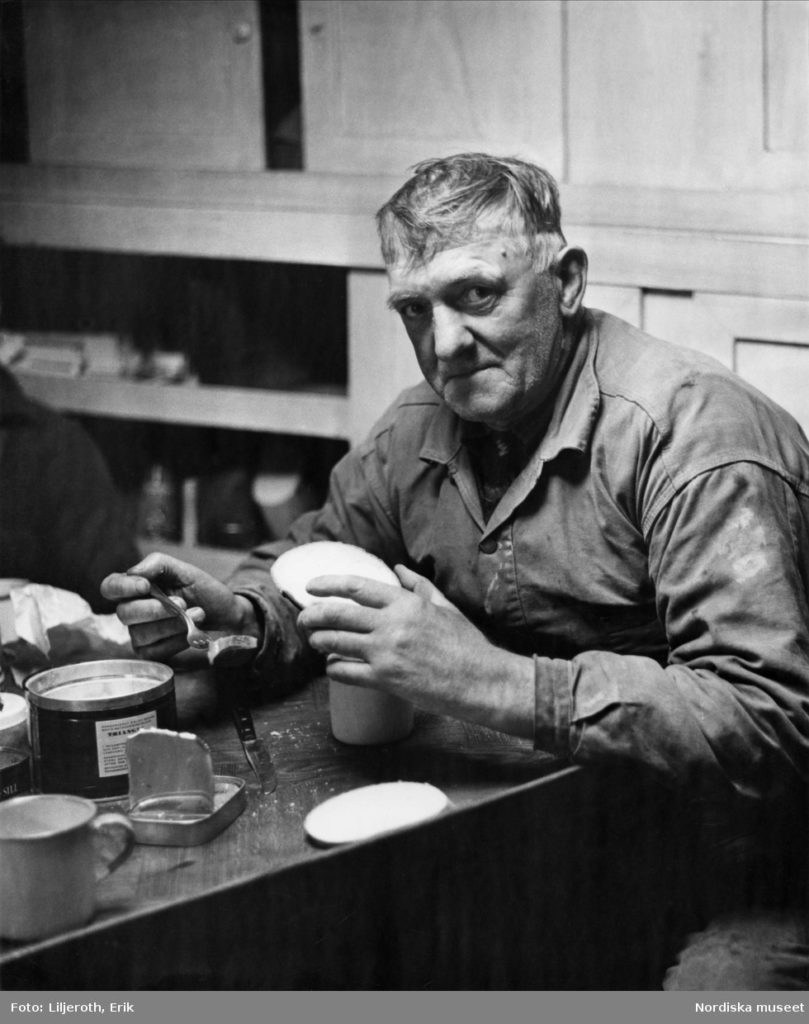
Why pickled herring?
If you lived along the Swedish coasts, you could eat the herring when it was fresh. The most popular way of serving herring today is probably to get the fresh herring fillets, dip them in breadcrumbs and fry, and serve them with some mashed potato and lingonberry sauce — divine!
But historically, it was difficult to transport the herring into the midlands. So, what did people do? Well, according to Jan-Öjvind Swahn, this is the answer to the “weird” Swedish ways of treating fish.
The most common way of preserving the fish was to salt it. That’s why many old recipes start by asking you to soak the herring in water to get rid of the salt.
Other herring was smoked — it is then called böckling, or bloater. Then we have fermented herring, called surströmming. Last but not least, we have our friend the pickled herring.
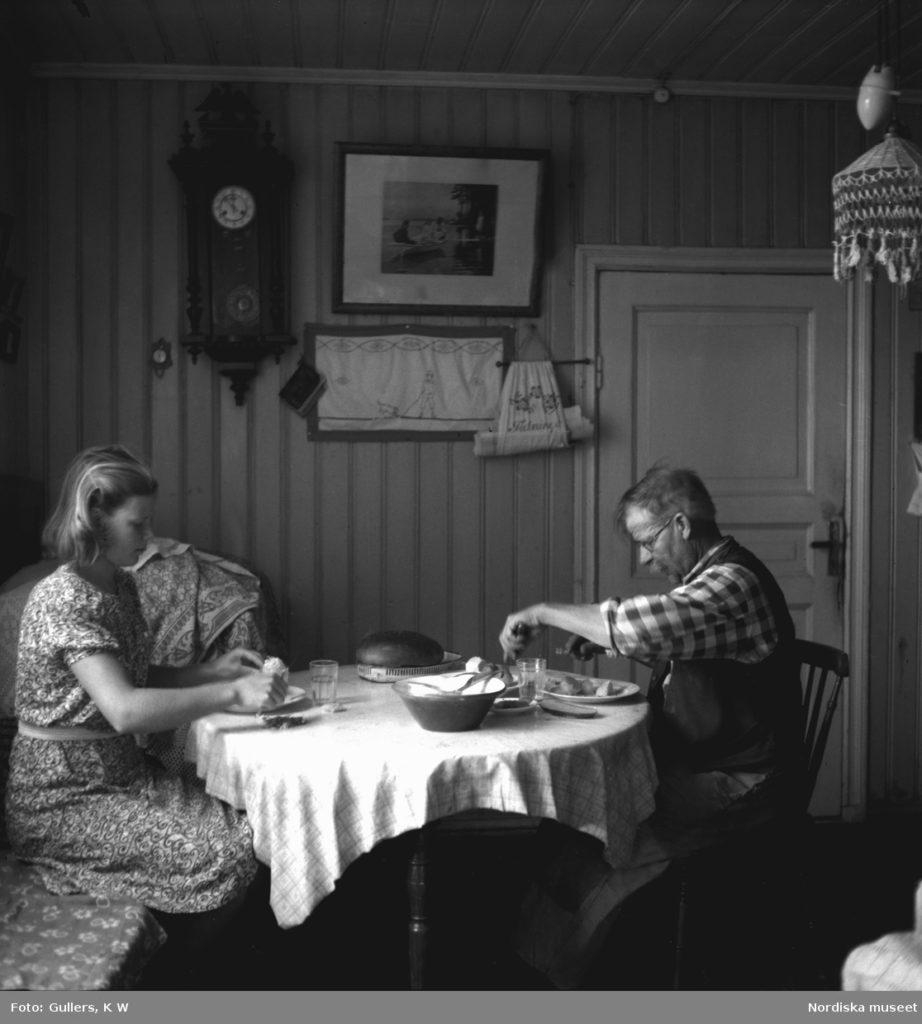
So how do you make delicious pickled herring?
Swedes stores generally have several types of pickled herring. But what if you want to make it yourself? There are several different kinds of herring for that.
Of course, you could use fresh herring for pickling, but I’d recommend coating them with breadcrumbs and frying them instead because it is delicious.
Three types of herring for pickling
So, in the Swedish stores, there are mainly three types of herring for pickling; salted herring, pre-washed salted herring, and “five-minute herring” which is already pickled. The preparations will vary a bit, depending on which one you get.
The salted herring needs to be rinsed before you pickle it. The restaurant Oaxen seems to deal with salted herring and according to them, you don’t want to rinse your herring under running water. Instead, you should rinse out the salt by placing the fillets in water for at least 24 hours — back in the days when the herring fillets were larger, it could be necessary to leave them in the water for two days. Then, you do the same as for the pre-washed herring:
For the pre-washed herring, urvattnad inläggningssill, you need to prepare a brine and pickle the herring for at least a couple of days before it is ready.
The “five-minute herring”, femminuterssill, is already pickled and you just put in a pickling brine or a sauce of your choice to give it flavor.
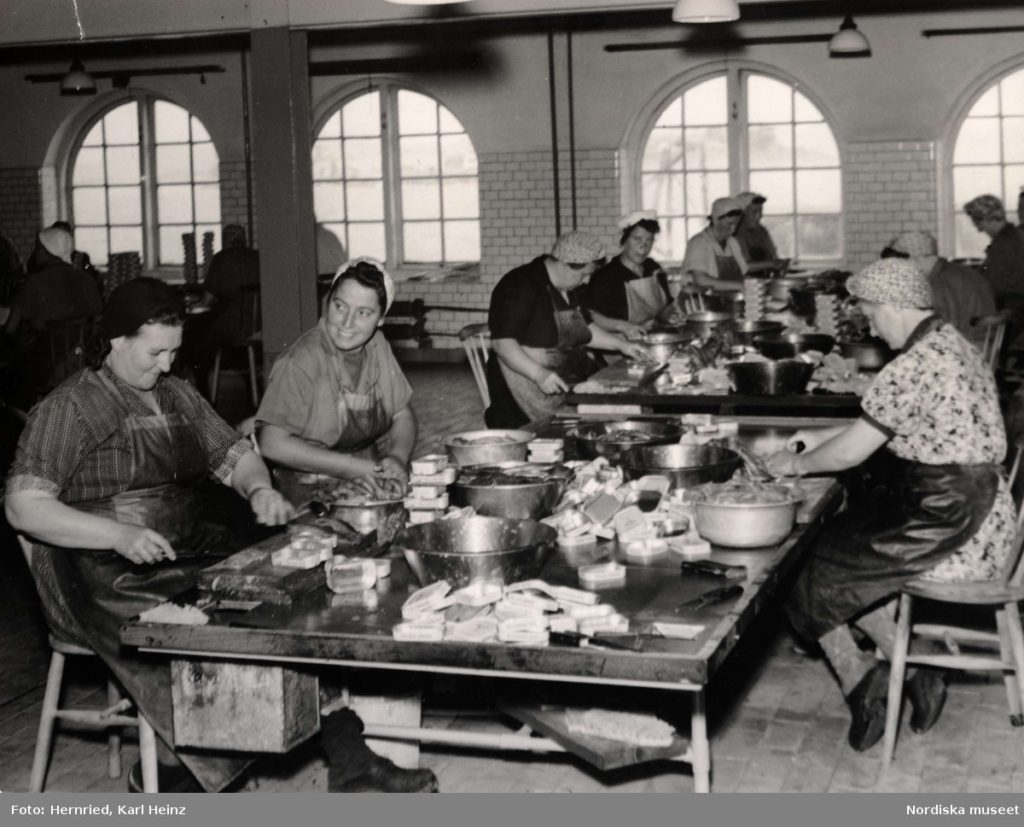
Pickling the herring
If you get a salted or pre-washed salted herring, you’ll want to start by trimming the herring fillets. You do that by cutting off the fatty part by the tail and of the stomach. Otherwise, the brine will get cloudy. These pieces can be used to make herring salad (yes, I know it sounds weird).
The rest is quick: I make a “1-2-3” brine, meaning one part spirit vinegar, two parts sugar, and three parts water.
So, what’s spirit vinegar? Spirit vinegar is also known as distilled white vinegar. In Swedish shops, you’ll generally find ättikssprit which is 12% and ättika which is 24%. If you find the latter, you can dilute it with 50% water and then use it in the recipe below.
Flavoring the pickled herring
There are two main ways of flavoring the pickled herring.
The simplest one is by flavoring the brine. Once the herring is pickled, it is flavored and done. Further down in this article, you’ll find the recipe for one of the most popular flavors called glazier herring, which has carrots, leek, and allspice in the brine. Onion is another popular choice.
The other way to change the seasoning is by putting the pickled herring in a sauce. Two of the most popular sauces seem to be mustard or sour cream, dill, and fish roe sauce.
A small health and safety announcement
As always when it comes to handling pickled food and fish in general, hygiene is of paramount importance. Yes, I know you’ll wash your hands extra carefully, but it is also important to sterilize the jars. I do that by washing them well with dishwashing liquid and hot water, then pouring boiling water over them, and then heating them in the oven for about 10 minutes.
Also, once your beautiful herring fillets are in the jar, make sure they are completely covered by the brine. Otherwise, you need to push the herring down or make more brine to top it up.
The Oaxen restaurant claims that the herring can last for up to 18 days when in the fridge, but that you preferably should eat it within 4-8 days. While herring pickled in brine can last for a long time, any herring in sauce will last a shorter period of time.
If you have a buffet-style smörgåsbord, make sure the herring isn’t left at room temperature for too long, especially if it is sauce-based.
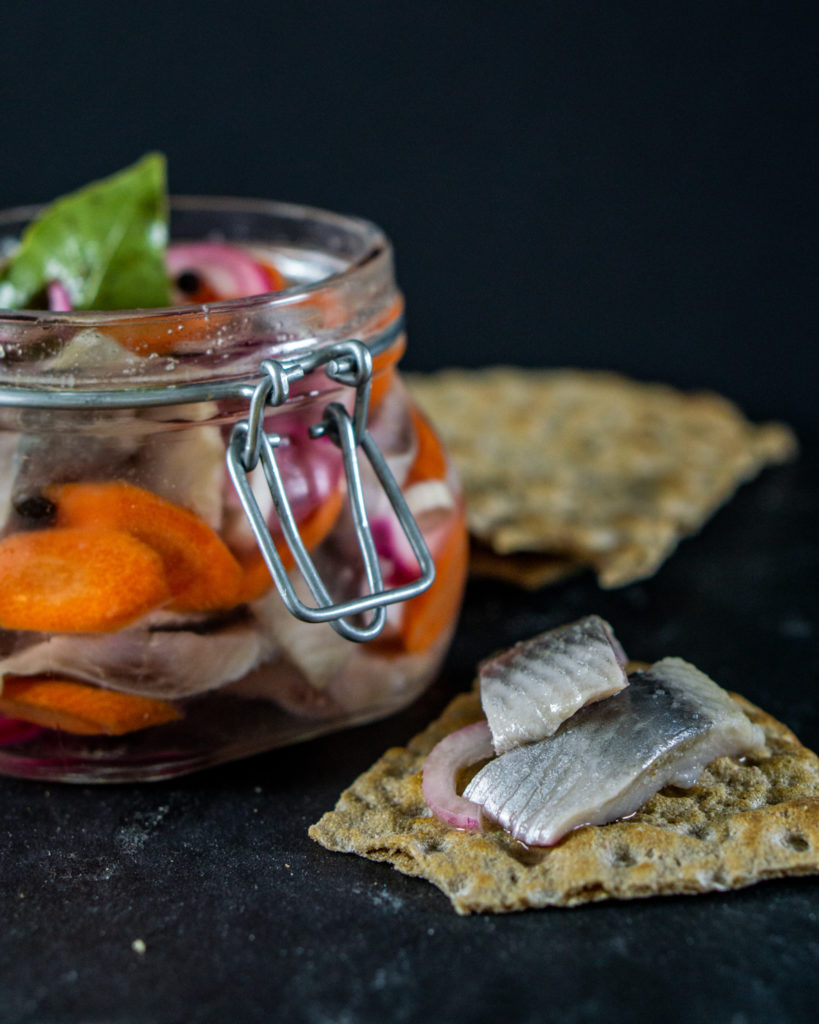
How to make easy Swedish pickled herring
The work required to pickle herring doesn’t take long to complete. However, you’ll need to wait for a couple of days before you can enjoy the fruits of your labor. This particular type of flavoring is called glasmästarsill, or glazier’s herring. Please read the health and safety recommendations above.
about 400 grams (about 5/6 pound) of pre-washed salted herring for pickling, inläggningssill
1 carrot
1/2 red onion
10 cm (4 inches) leek
12 whole allspice
1 bay leaf (optional)
Brine:
1 dl (1/2 cup) spirit vinegar 12% — or 1/2 dl (1/4 cup) of spirit vinegar 24% and 1/2 dl (1/4 cup) water
2 dl (1 cup) sugar
3 dl (1 1/2 cups) water
- Start by distilling a large glass jar by washing it well with dishwashing liquid and water, and either boiling it or putting it in the oven for 10 minutes (don’t place any rubber or plastic details in the oven!). I boil any metal lids but usually use glass lids with a rubber edge. Let it cool while you do the rest.
- If you have whole herrings, trim off the tail and fat part along the stomach edge. Then, cut the herrings into smaller pieces.
- Peel the carrot and cut it into coins. Cut the onion and leek into thin slices.
- Make the brine by putting the spirit vinegar, sugar, and water in a saucepan and bringing it to a boil. Then simmer it until the sugar has dissolved. Let the brine cool.
- Layer the herring fillets, carrot, onion, and leek in the jar. Add the whole allspice and bay leaf.
- Pour over the brine. You don’t have to use all the brine, but make sure that you use enough to cover the herring completely. If the herring isn’t covered, see if you can push it down in the jar or make more brine.
- Seal the jar and place it in the fridge and wait for two days. Now it’s time to enjoy your herring!
Suggestions
If you have salted herring fillets, soak them in water for two days in the fridge to remove excess salt, then follow the recipe.
So, how do you eat the herring? The simplest way is to put a couple of slices on a piece of crispbread, knäckebröd. Another common choice is to enjoy the herring for lunch with boiled potato and maybe a sliced boiled egg.
Play with the flavoring however you like, BUT do not change the proportions on the brine. It is necessary to create the right environment for the pickling process. Another name for spirit vinegar is distilled white vinegar. Just make sure it is of the correct strength.

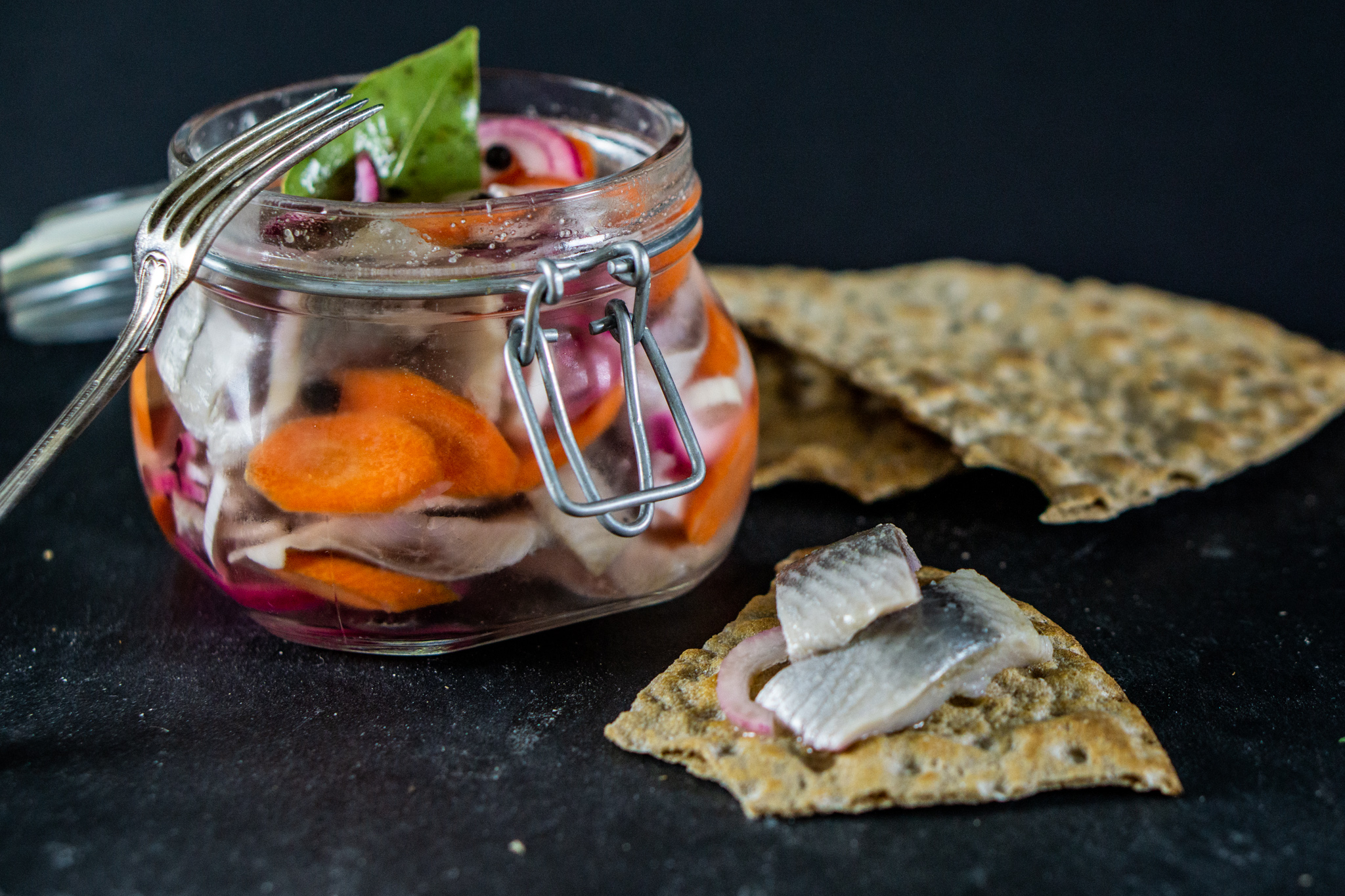

Spirits vinegar is not available in Japan.
Can you make it with white wine vinegar(5.5%~6%)?
Hi Chiemi,
I’ve always pickled herring with spirit vinegar/white vinegar which is 12%. As it is a matter of food safety, I reached out to Livsmedelsverket, the Swedish Food Agency, and asked them. The reason why we use acid of vinegar is to lower the risk for Clostridium botulinum bacteria.
According to them, it is possible to use white wine vinegar instead. However, you have to calculate the right ratio so the concentration is right, as it is a matter of volume, too.
A friend has told me she uses undiluted white wine vinegar and sugar instead of spirit vinegar + water + sugar. However, I can’t vouch for the safety in that. I have written to Livsmedelsverket again to double-check the ratios that would be necessary!
Thank you Isabelle. I am waiting for it!
Hi Chiemi,
I am sorry about getting back to you so very late on this. According to Livsmedelsverket, you want a brine that is 3% in the end once the vinegar, sugar, and water is mixed.
So, Livsmedelsverket shared that you’d need 2 1/4 dl of a white wine vinegar that is 7%. (That is for the original recipe above with 3 dl of water and 2 dl of sugar.)
If you’re using another strength on the vinegar, we’ll have to use some maths to get through this 🙂
Livsmedelsverket’s calculation looks like this: 0,03=0,07*x/(3+x)
Let’s see if I can share it so it is more useful:
[target dilution, e.g. 3%]=[the strength of vinegar, e.g. 7% in this example]*x/([the amount of water]+x)
If I solve that correctly, it would mean that if you use a 5% white wine vinegar, you’ll need to use 4 1/2 dl white wine vinegar, 3 dl of water, and 2 dl sugar.
That sounds like a very large amount of brine though, so maybe it would just be easier to reduce the amount of water a bit until the dilution is 3%?
Hope that helps!
Wikipedia says and I quote “most commercial vinegar solutions available to consumers for household use do not exceed 5%.” Did you get an answer from Livemedelsverket Isabelle?
Hi Ulla, your comment ended up in spam where it definitely didn’t belong — apologies! Wikipedia isn’t exactly wrong, but stronger vinegar is widely available in countries like Sweden. Please see my comment to Chiemi regarding the right solution with white wine vinegar!
Hi Isabelle. Can I make this without boiling my glass jars. We plan on eating it right away after following the instructions. Thanks for the recipe!
Hi Kelly,
If you buy femminuterssill, “five minute herring”, that is already pickled and ready to eat, then you can just make a sauce in a jar or bowl, add the herring, and eat straight away.
The type of herring I used in the recipe needs a couple of days to soften in the pickling brine. Therefore, I’d recommend you sterilizing the jars. You don’t want to ehrm get in a pickle because of bad herring 🙂
My husband has been making pickled herring with his Grandma’s recipe, but the batch he made this year when soft on him. The herring I mean. The Nelsons in Lake Stevens Washington
Deborah, how lovely that your husband is using his grandmother’s recipe! I hope the next batch will be even better.
I ordered salted herring from Sweden and followed your recipe. Solved for X to make the brine. Amazingly good!!!
Teri, so happy to hear it turned out well!